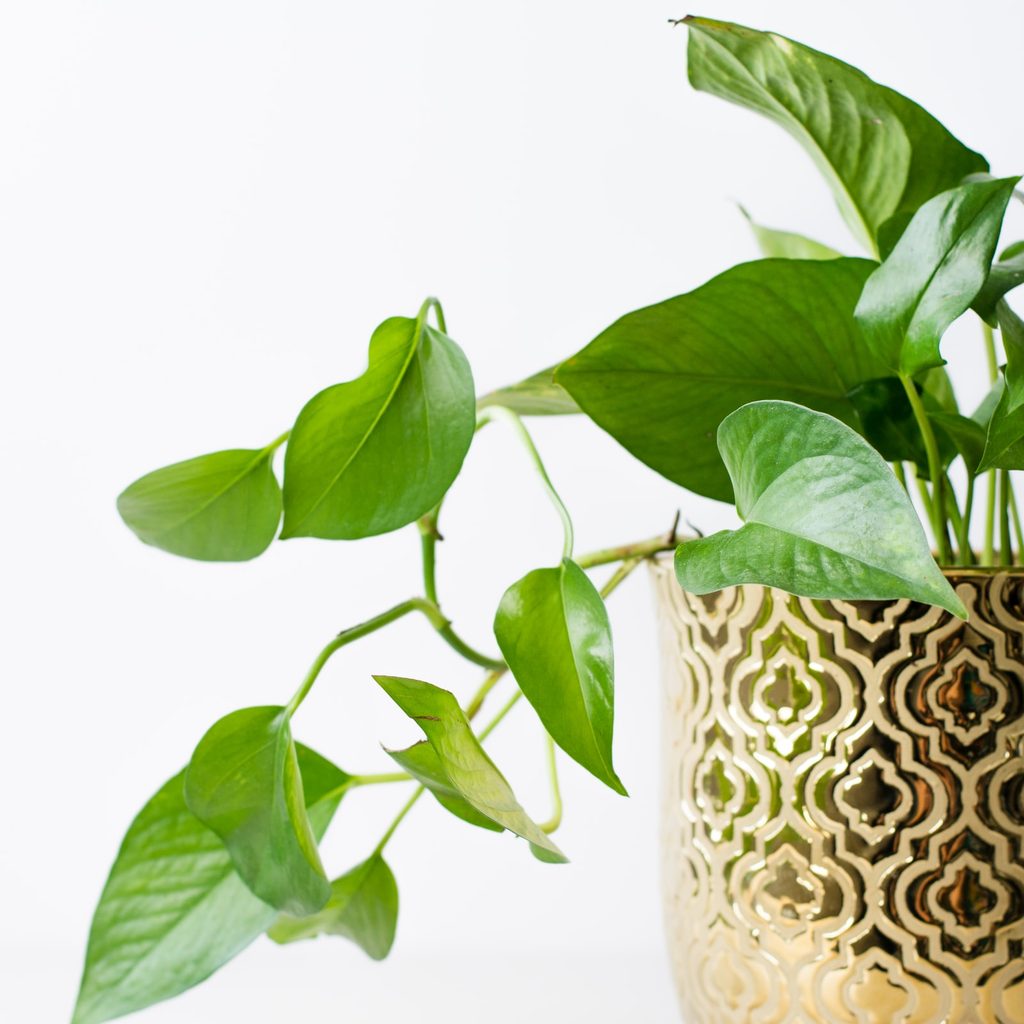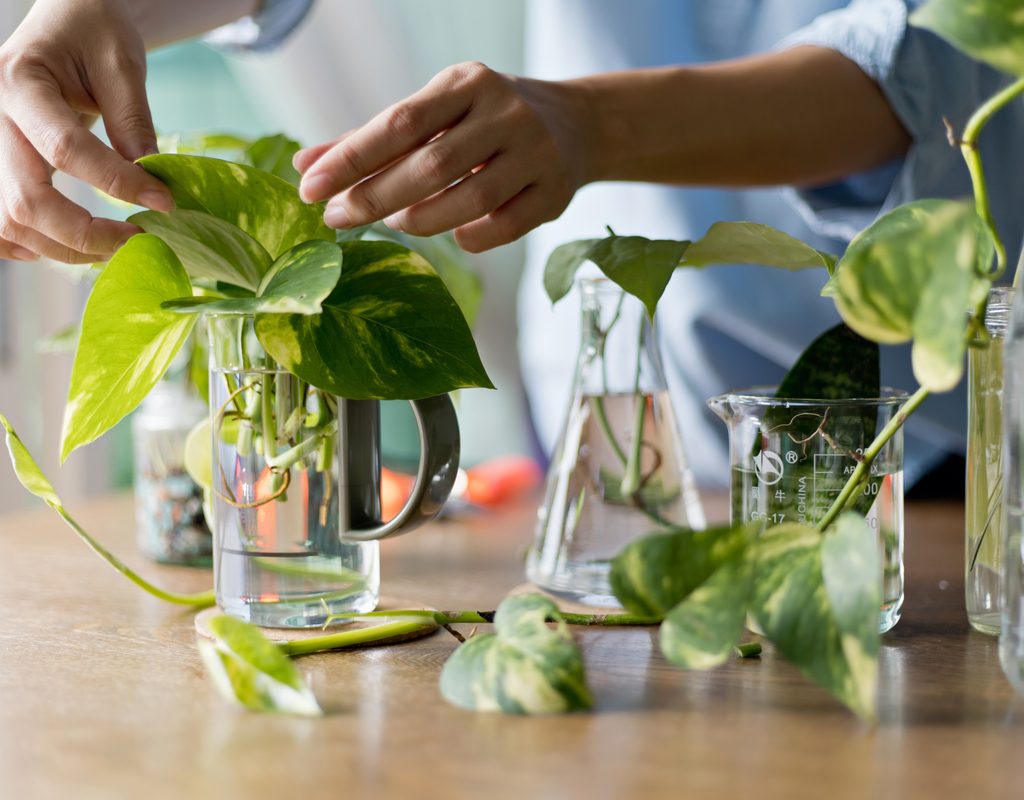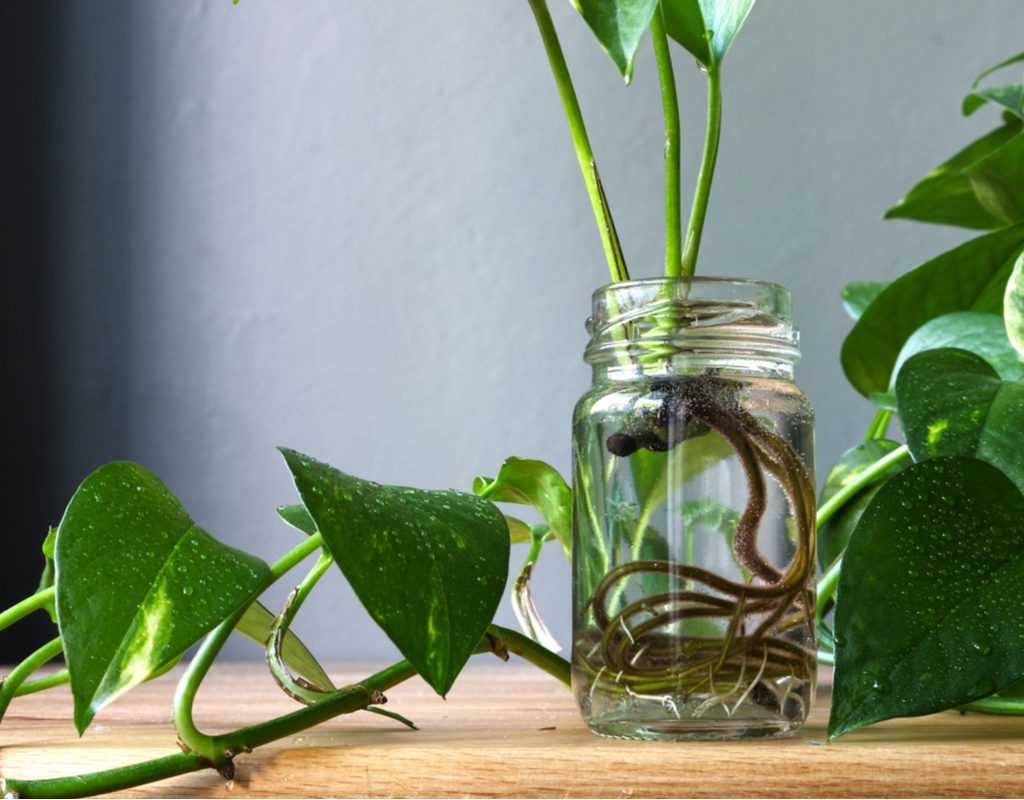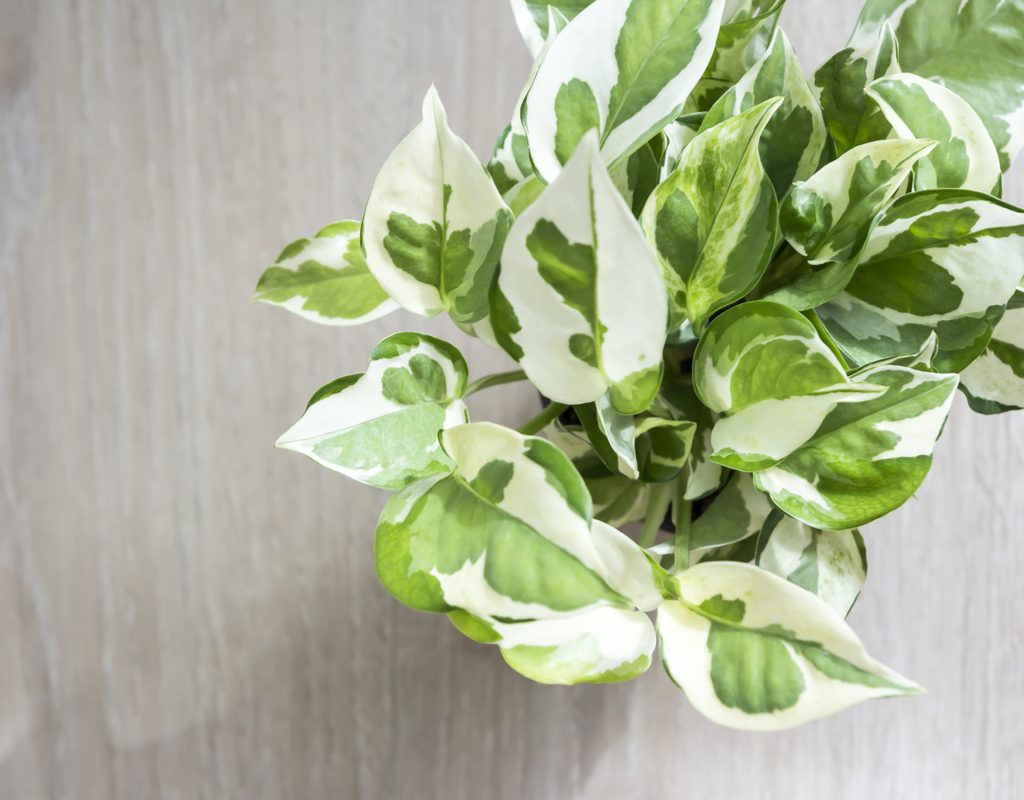The pothos (also known as devil’s ivy) is a hardy indoor plant with lush, heart-shaped leaves that grow on vines. It's also one of the easiest houseplants to grow entirely in water. Because it’s so sturdy, you can keep your pothos plant alive quite easily. It’s the perfect plant for starting your water-growing journey with your houseplants.

Can pothos grow in water forever?
So, how long can pothos live in water? Pothos vines, with proper care, have the capability of thriving in water. A pothos plant can live for years, so as long as you follow some tips to ensure nutrient-rich water and an ideal environment, your water-growing pothos should be around for quite a while.
Step 1: Because water does run out of oxygen, you’ll want to make sure you replace the water for your pothos every one to two weeks.
Step 2: Use a liquid fertilizer to ensure that the water has the proper amount of nutrients for strong growth.
Step 3: Remove the plant and clean the container as soon as you see any signs of algae growth.
As we all know, with water comes the potential for algae growth. Most likely, you’ll opt to grow your pothos in a glass container (because, let’s face it, seeing the roots is pretty neat). Choosing something more opaque could slow the growth rate of algae.

What kind of water is best for growing pothos in water?
While you could grow your pothos plant in plain old tap water, being mindful of what water you use could optimize your plant's growth. To keep your leaves looking green and pristine, it may be best to use distilled water, as hard tap water could lead to brown leaf tips.
You could also collect rainwater, which may contain beneficial nutrients for your plant — that said, it might not be realistic to replace your pothos' water supply with rainwater every few weeks. On the matter of water temperature, tepid, lukewarm water is best since you don't want to shock your plant roots with boiling or freezing temperatures.

When should I grow a pothos in water vs. soil?
Pothos are more than happy to grow in soil, but sometimes the plant can get overwhelming. The more it grows, the more you’ll have to do to propagate, split, and repot to keep the pothos happy.
Growing pothos clippings in water is a surprisingly lower maintenance way to keep the plant happy and healthy around your home. Not only that, but the plant will grow slower, so it won’t become unruly, and if you plant it in a clear jar, you’ll be able to check in on the roots and make sure they’re doing okay.

Does pothos grow faster in water or soil?
There’s no cut-and-dry answer. Both soil and water can have successful growth rates, and it depends entirely on how attentive you are to the pothos and its needs. If you’re actively watering a pothos in soil the way it likes to be watered, then you’ll have no trouble with the growth compared to pothos plants that are in water.
The big question now is, how do you grow pothos in water? In order to match the growth rate of a well-taken-care-of, soil-potted pothos, you’ll want to be sure you’re putting a ton of nutrients in the water for your pothos to thrive off them. When done properly, you’ll match (or even slightly exceed) the growth rate of a pothos planted in soil.

Can I grow pothos in water after starting it in soil?
It's possible to transplant a pothos from soil to water after it has already started growing/been growing in a pot; however, don’t be surprised if it takes time for the pothos to acclimate to the new environment. It may end up losing a leaf or two, but after an adjustment period, it should grow just fine.
Here are some helpful steps for growing pothos in water after you've started it in soil.
Step 1: Thoroughly rinse off any remaining soil from the roots of the pothos. Soil remnants could cause fungal infection in the roots and plant, so you’ll want to do everything you can to prevent that from happening.
Step 2: Place a drop or two of hydrogen peroxide in the water to oxygenate it.
Step 3: Carefully trim off any roots that look like they’re rotting or dying (as they could impact the other roots).
Step 4: Be careful not to damage any roots while you’re rinsing off the soil.

How long does it take for pothos to root in water?
If you’re starting with an already-grown pothos plant, transporting it from soil to water, then following the steps above, should ensure a seamless adjustment period between growing in soil and growing in water. Because the roots already exist, you’ll just need to help your pothos do its thing as best you can.
If you’re starting with cuttings your pothos and trying to grow them in water from the very beginning, it could take up to two weeks for roots to form — but they won’t do it all on their own. Like any living thing, it would be ridiculous to place them in water, leave them alone, and expect them to thrive.

How to successfully propagate pothos in water
Propagating pothos cuttings in water is pretty straightforward as long as you provide the proper care.
Step 1: Take the vine cutting right below a node and remove any leaves in the surrounding area, so they don’t drown in the water and prevent the growth of new roots.
Step 2: Once you have a healthy cutting, place it in a container of water and keep it in indirect sunlight.
Step 3: Start the fertilization process right away (generally once a month or so) to be sure the water has nutrients for the cutting to thrive.
You’ll want to use an all-purpose liquid fertilizer so that the plant has immediate access to it, and make sure to use the right amount so you don’t risk excess nutrients causing algae.

How much light does pothos need?
Pothos plants are flexible with the amount of sunlight they need to survive. A pothos does well in both low-light and indirect bright light conditions. However, the colors of the plant may differ based on the type of lighting it receives.
Because pothos like varying levels of light, you can place them in different spaces in your home, such as a bathroom that gets indirect light or a window that gets a good amount of bright, indirect sunlight.

How long can pothos live?
A healthy pothos plant can live up to 10 years! Things that affect this can include its environment, possible infection, rotting, and fungus. As long as you follow the proper care tips (whether growing in water or in soil), you should have a beautifully thriving pothos plant for as long as you want it.
And remember, because it’s a sturdy plant, it can withstand a bit of accidental neglect. So missing a step or two now and then won’t be the end-all, be-all for your precious pothos.

Which types of pothos can you grow in water?
There are so many different types of pothos out there to choose from, and most of them are relatively easy to propagate and grow in water. If you're a beginner, however, it's a good idea to start with common pothos plants such as the jade pothos and golden pothos. Pothos plants with lots of variegated leaves are a bit more sensitive to issues related to hard water, over-fertilizing, and limited lighting.
Some varieties that might not be very beginner friendly include the N'Joy pothos, harlequin pothos, and pearls and jade pothos. If you're determined to grow these in water, keep a careful eye on them to intervene with any potential issues.
While water may not be the most conventional choice as a growing medium for a pothos, it's definitely a feasible one. In fact, you can grow a fairly prolific pothos plant in water with a little dedication. With all of these tips in mind, you can confidently pick up a pothos plant or cutting and get to growing.



